Disclosure: This article contains affiliate links. We may earn a commission from purchases at no extra cost to you, which helps our travel content.
The Rock River winds through Rockford like a timeline, chronicling the city's evolution from industrial powerhouse to cultural renaissance. As a wildlife biologist who has documented urban adaptations across North America for three decades, I find Rockford particularly fascinating—a mid-sized Midwestern city demonstrating remarkable ecological and cultural resilience. My research initially brought me here to study riparian corridor adaptations, but I've returned multiple times to witness the city's transformation. This spring weekend exploration revealed how Rockford has reimagined its industrial spaces, revitalized its riverfront, and reconnected residents with both natural and cultural heritage—creating an urban laboratory of revitalization that deserves far more attention than it typically receives in travel discourse.
Anderson Japanese Gardens: Urban Serenity with Scientific Precision
While many visitors approach the Anderson Japanese Gardens purely for aesthetic appreciation, my background in ecological systems draws me to this 12-acre masterpiece for additional reasons. The gardens represent one of North America's finest examples of intentional urban ecosystem design, where human artistry and natural processes achieve remarkable equilibrium.
Created in 1978 when businessman John Anderson commissioned landscape architect Hoichi Kurisu to transform his swampy backyard, the gardens demonstrate principles of ecological succession and habitat creation that we often discuss in restoration biology. The 200+ species of plants are meticulously maintained through traditional Japanese pruning techniques that mimic natural growth patterns while creating human-defined forms—a fascinating intersection of culture and biology.
During my spring visit, I observed Eastern bluebirds utilizing nesting boxes discretely integrated into the landscape design, while chorus frogs vocalized from the koi ponds. The garden staff practice integrated pest management rather than chemical interventions, creating a functioning ecosystem rather than merely an outdoor museum.
The gardens' Guest House, designed by Tadashi Yamane, incorporates principles of biomimicry in its construction—something I documented extensively in my field notes using my waterproof notebook, which proved invaluable during an unexpected spring shower.

💡 Pro Tips
- Visit early morning (9-10am) when wildlife activity is highest and before larger groups arrive
- Request the self-guided ecology tour brochure at the entrance for insights beyond the standard cultural information
- Bring binoculars to observe bird activity in the upper canopy of the Japanese maples
Burpee Museum of Natural History: Urban Paleontology in Context
The Burpee Museum represents precisely what I advocate for in my academic writing—a regional natural history institution that connects global scientific understanding with local ecological context. While modest in size compared to metropolitan museums, the Burpee excels in contextualizing paleontological findings within the regional landscape.
The museum's crown jewel, Jane the juvenile T. rex, provides an exceptional teaching moment about ontogenetic development in theropod dinosaurs. Having spent time at both the Field Museum in Chicago and the American Museum of Natural History in New York, I was impressed by how the Burpee's interpretive materials made complex concepts accessible without oversimplification.
What particularly resonated with my research interests was the 'Windows to Wilderness' exhibit, documenting ecological changes in the Rock River Valley from prehistoric times through European settlement to present-day conservation efforts. The exhibit effectively demonstrates how urban development has fragmented habitat corridors—precisely the phenomenon I've studied in eastern raccoon populations throughout the Great Lakes region.
For visitors with children, I recommend bringing a pocket microscope to examine the details of the geological specimens in the hands-on discovery area. This simple tool transformed my colleague's daughter's experience from passive observation to active scientific inquiry.
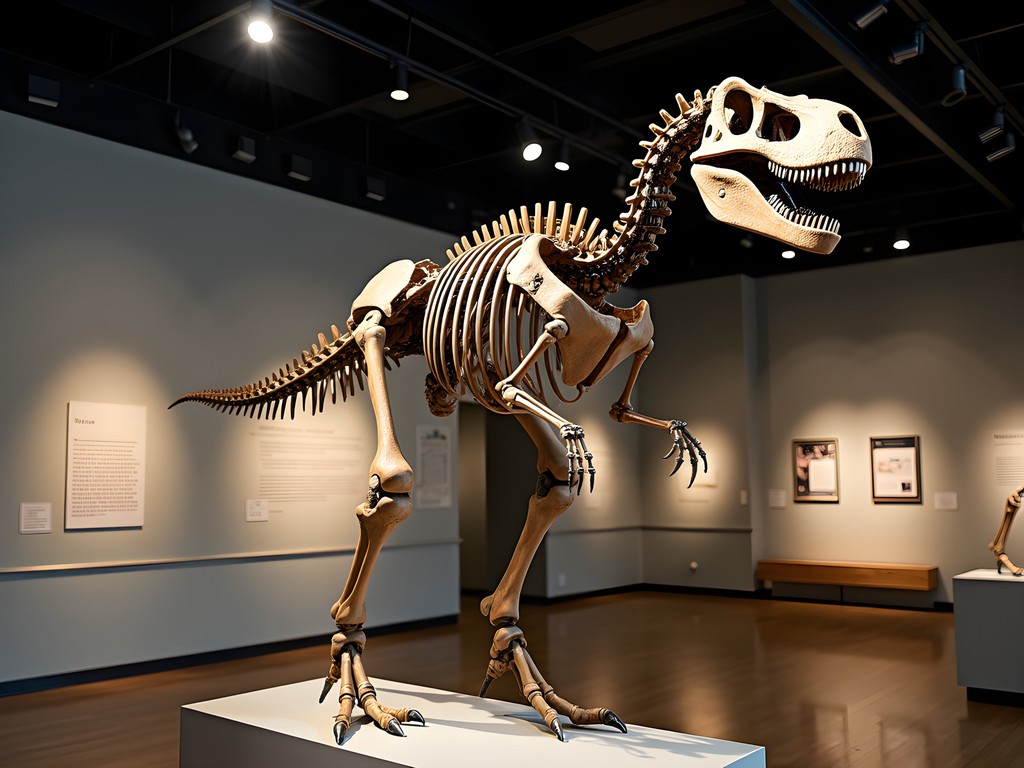
💡 Pro Tips
- Allow at least 2 hours to properly explore all exhibits
- Check the schedule for the paleontology lab windows—sometimes you can observe active fossil preparation
- The museum hosts excellent lecture series; check their calendar if your visit coincides with an evening talk
Rock River Recreation Path: Urban Corridor Ecology
The 10-mile Rock River Recreation Path offers more than just scenic views—it presents a fascinating study in urban corridor ecology. As someone who has published extensively on how linear green spaces function as wildlife highways through developed areas, I was eager to document the ecological transitions along this pathway.
The paved trail follows the river's contours through downtown, connecting disparate neighborhoods and ecological zones. What impressed me most was how the city has incorporated native plantings along sections of the riverbank—a stark contrast to the manicured, ecologically sterile riverfront developments I've observed in many other Midwestern cities.
During my morning walks, I documented evidence of beaver activity near Shorewood Park, raccoon tracks in several muddy sections, and an impressive diversity of migratory warblers utilizing the corridor during spring migration. The city's decision to maintain sections of unmowed riparian buffer has clearly paid ecological dividends.
The trail also serves as an excellent case study in urban environmental history. Interpretive signs mark former industrial sites where factories once discharged directly into the river, contrasted with current restoration efforts. For those interested in documenting their observations, I recommend the field guide which has accompanied me on countless urban ecology excursions.
What particularly struck me was how the path contextualizes Rockford's relationship with its river over time—from industrial resource to neglected waterway to centerpiece of urban revitalization. This trajectory mirrors patterns I've documented in numerous post-industrial cities across the Great Lakes region.
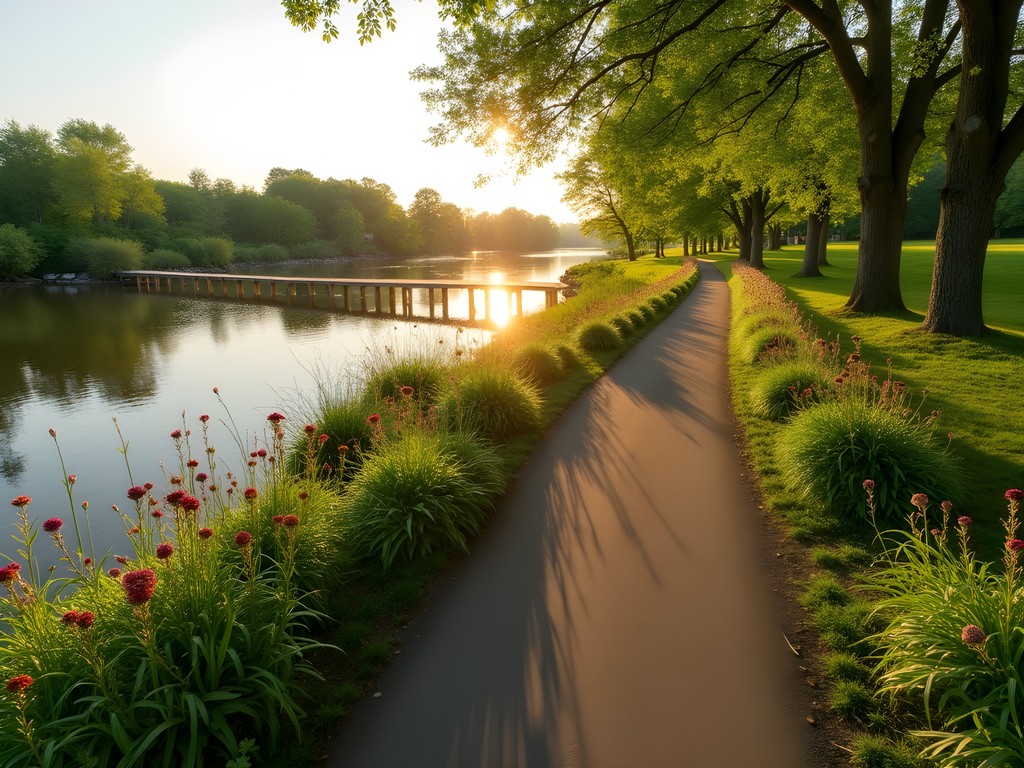
💡 Pro Tips
- The section between Whitman Street Bridge and the Sinnissippi Gardens offers the best wildlife viewing opportunities
- Early morning (before 8am) provides optimal conditions for observing urban wildlife
- Download the Rock River Trail Initiative app for ecological points of interest along the route
Midtown District: Adaptive Reuse as Urban Strategy
Rockford's Midtown District exemplifies a phenomenon I've documented across North America—how creative adaptive reuse of industrial infrastructure can catalyze neighborhood revitalization without complete displacement of existing communities. As a biologist who studies adaptation, I find urban adaptive reuse particularly fascinating as a human parallel to ecological succession.
The district centers around the former Rockford Standard Furniture Company building, now transformed into a mixed-use development housing creative businesses, studios, and community spaces. What distinguishes Rockford's approach from gentrification patterns I've observed in larger cities is the intentional preservation of affordability and inclusion of existing neighborhood stakeholders in the planning process.
The Katie's Cup coffee shop serves as an informal community center where I observed diverse neighborhood residents interacting—a stark contrast to the socially segregated 'third places' that often accompany urban redevelopment. Their locally-sourced breakfast fueled my morning explorations, and the baristas provided invaluable local insights that shaped my itinerary.
Particularly noteworthy is how the district has incorporated green infrastructure into its redevelopment strategy. Rain gardens capture stormwater runoff from former industrial sites, while native plantings support urban pollinators—a small but meaningful contribution to urban biodiversity. The Rockford Art Deli's screen-printing operation has implemented environmentally responsible practices, demonstrating how creative industries can minimize ecological impacts.
For those interested in urban development patterns, I suggest bringing a field journal to document observations on how different demographic groups utilize these transitional spaces. My research on urban adaptation consistently reinforces that the most successful revitalized neighborhoods maintain socioeconomic diversity rather than simply replacing one population with another.

💡 Pro Tips
- Visit on First Fridays when galleries and studios open their doors to the public
- The Rockford Art Museum offers an excellent exhibit on the city's industrial history that contextualizes the district's transformation
- Speak with longtime business owners for perspectives on the neighborhood's evolution
Nicholas Conservatory & Gardens: Controlled Ecosystem in Urban Context
For a biologist who has spent decades studying how organisms adapt to built environments, the Nicholas Conservatory represents a fascinating controlled experiment in ecosystem design. This 11,000-square-foot tropical greenhouse along the Rock River creates a compelling juxtaposition—exotic tropical species thriving in a carefully maintained environment while native Illinois ecosystems undergo seasonal changes just outside its glass walls.
What distinguishes this facility from similar conservatories I've visited in larger cities is its intentional educational approach connecting tropical plant conservation to local environmental issues. The interpretive materials effectively explain how principles of tropical forest ecology—nutrient cycling, species interdependence, and adaptation to environmental stressors—apply equally to the temperate ecosystems of northern Illinois.
During my visit, I was particularly impressed by the conservatory's butterfly habitat, which houses species native to both tropical regions and Illinois. The exhibit thoughtfully explains migration patterns, habitat requirements, and conservation challenges facing lepidoptera globally and locally—making distant environmental issues immediately relevant to Rockford residents.
The outdoor gardens incorporate sustainable landscaping practices, including rain gardens that capture and filter stormwater before it reaches the Rock River and extensive use of native prairie plants that support local pollinators. These demonstration gardens provide visitors with practical examples of how ecological principles can be applied to home landscapes.
The conservatory's Eclipse Lagoon offers excellent bird watching opportunities, particularly during spring migration. I observed several warbler species, great blue herons, and a surprising diversity of waterfowl utilizing this urban habitat patch—evidence of how thoughtfully designed urban green spaces can support biodiversity even within developed areas.
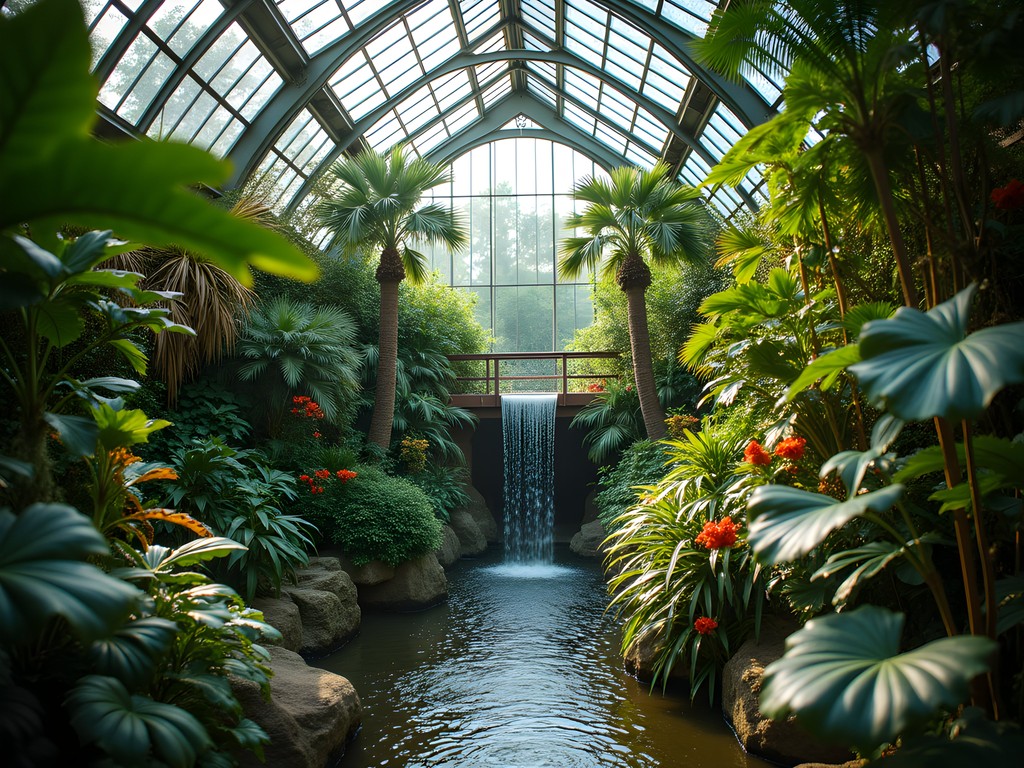
💡 Pro Tips
- Visit Tuesday mornings for their guided 'Science Behind the Gardens' tours that explain the ecological principles at work
- The outdoor gardens are free to access even when the conservatory is closed
- Check their calendar for special exhibits—their seasonal butterfly displays are particularly educational
Final Thoughts
Rockford exemplifies what I've observed in my decades studying urban adaptation—that mid-sized cities often serve as more accessible laboratories for sustainable revitalization than their larger counterparts. The city has leveraged its industrial heritage, riverfront assets, and cultural institutions to create an urban experience that feels authentic rather than manufactured for tourism. What makes Rockford particularly worthy of exploration is how it balances preservation and progress, maintaining connections to its working-class roots while embracing creative approaches to urban challenges. For travelers seeking to understand how American industrial cities are reinventing themselves in the 21st century, Rockford offers valuable insights without the overwhelming scale of larger metropolitan areas. As both a scientist and traveler, I value places that reveal their stories gradually—and Rockford rewards those willing to look beyond surface appearances to discover the complex urban ecosystem beneath.
✨ Key Takeaways
- Rockford demonstrates how industrial heritage can be preserved while adapting to new economic and ecological realities
- The city's relationship with the Rock River has evolved from exploitation to celebration, creating new recreational and ecological opportunities
- Mid-sized cities often implement innovative urban solutions that fly under the radar of mainstream travel media
- Thoughtful adaptive reuse of existing infrastructure creates more authentic urban experiences than ground-up redevelopment
📋 Practical Information
Best Time to Visit
Mid-April through June when spring migration and flowering are at their peak
Budget Estimate
$200-300 for a weekend (accommodations, meals, and attractions)
Recommended Duration
2-3 days
Difficulty Level
Easy

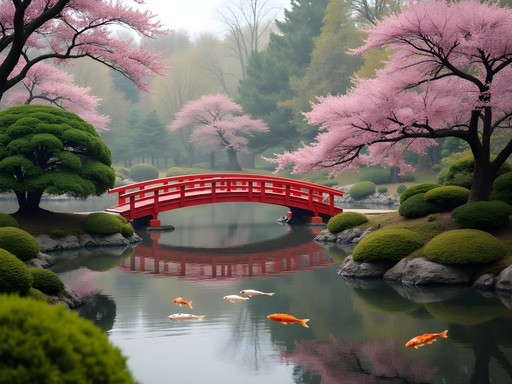
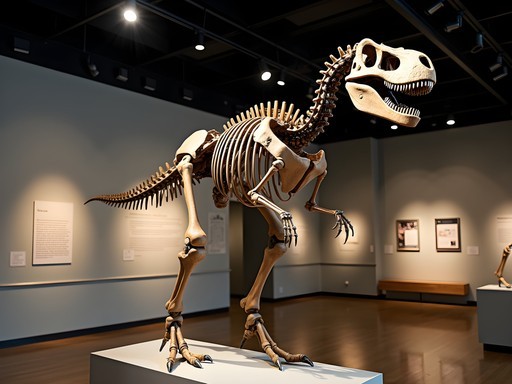
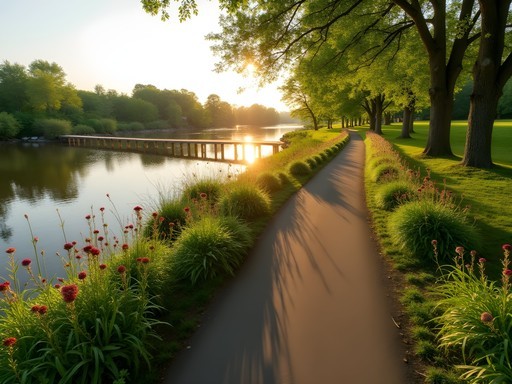











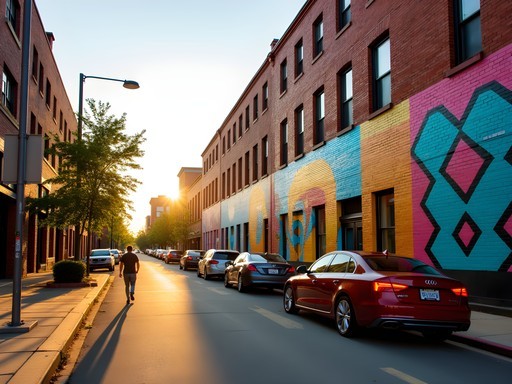
Comments
coolstar
Anyone know if the Burpee Museum is worth visiting if you're traveling with teenagers? My kids are 15 and 17 and we'll be passing through next month.
winterrider
My nephew is 16 and he loved it! Jane the T-Rex fossil is pretty impressive, and they have some interactive exhibits that even kept him off his phone for a while. Not huge like Chicago's Field Museum but definitely worth a couple hours.
coolstar
Thanks! Anything that can compete with screen time is a win in my book.
wildzone
As someone interested in urban wildlife, are there any specific spots along the Rock River where you're more likely to see interesting birds or animals? Going there in October.
Sophia Wilson
Great question! The stretch of the Rock River path near Sinnissippi Park has several observation points where you can spot great blue herons, eagles (if you're lucky), and various migratory waterfowl in October. Early morning is best. The Nicholas Conservatory area also has a surprising amount of urban wildlife activity.
wildzone
Thanks so much! Will definitely check out those spots. Early morning works for me!
Sophia Gomez
Your post brought back memories of my unexpected layover in Rockford last year when Chicago O'Hare closed due to storms. What started as travel frustration turned into one of those happy accidents we travelers live for! A local bartender at the airport hotel told me to check out Anderson Gardens while I waited for flights to resume. I went expecting a quick walk but stayed for hours. There was this moment by the koi pond where the late afternoon light filtered through maple trees, and I watched an elderly gentleman carefully sketching the scene. He told me he'd been coming weekly for 15 years, finding new details each visit. That conversation changed how I approached the rest of my unexpected Rockford day. I love how you captured the scientific precision of the gardens - it's exactly that balance of natural beauty and human care that makes the space so compelling. Sometimes the places we never planned to visit leave the deepest impressions.
Sophia Wilson
What a beautiful story, Sophia! Those unexpected detours often create the most authentic travel experiences. Anderson Gardens is indeed special - I've visited in three different seasons now and it transforms completely each time while maintaining that sense of precision and care.
Jennifer Rodriguez
What fascinates me about Rockford is how it exemplifies the post-industrial revival pattern we're seeing across the Midwest, but with its own distinct character. I spent three days there last month documenting adaptive reuse projects for my own research. The economic metrics are interesting - property values in the Midtown District have increased 18% in two years, yet it's maintained affordability compared to similar revitalization zones in larger cities. The city's approach to integrating the river as both recreational asset and ecological showcase is particularly noteworthy. I'd add Prairie Street Brewhouse to your list - their riverside patio provides another perspective on the urban waterway relationship, and their locally-sourced menu represents the regional food renaissance happening alongside the architectural one. I tracked all my walks with my fitness tracker and averaged 18,000 steps daily without even trying - Rockford is surprisingly walkable!
winterrider
Visited Rockford last weekend after reading this. The Midtown District was such a pleasant surprise! Found this amazing little record store in a converted factory space and ended up chatting with the owner for an hour about the city's history. Also, the coffee shop next door makes incredible lavender lattes. Didn't get to the museum though - saving that for next time.
coffeemaster
Was it Toad Hall Records? That place is a gem! And I bet the coffee shop was Rockford Roasting - their lavender stuff is amazing.
winterrider
Yes! That's exactly it. How did you know? Are you a local?
coffeemaster
Grew up nearby. Rockford's been my weekend escape for years. Nice to see it getting some love!
happymaster
Is the Rock River path good for biking with kids? Planning a weekend trip in September.
Sophia Wilson
Absolutely! The path is mostly flat and well-maintained. There are several spots where you can stop and watch for birds and turtles, which kids love. Just be careful around downtown on weekends when it gets busier.
happymaster
Thanks! That's perfect. My 8-year-old is obsessed with turtles right now.
coffeemaster
Never thought I'd see Rockford getting the spotlight! Been telling friends it's underrated for years. That Japanese garden is seriously magical in fall.
photoclimber
Great post! The shots of Anderson Gardens are gorgeous. Adding Rockford to my weekend getaway list!
hikingwalker
Love this post! I'm planning a weekend trip to Rockford this fall. Is the Rock River path good for biking? Should I bring my own bike or are there rentals available? Also super excited to check out the Midtown District!
photoclimber
Not the author but I did the path last year! Definitely bike-friendly and there's a rental shop called Rocktown Adventures right by the river. I used my day pack which was perfect for carrying water and snacks along the route. The fall colors should be amazing!
hikingwalker
That's super helpful, thanks! Will check out the rental place. Can't wait to see those fall colors!
Jean Wells
Having lived in Japan for 15+ years, I was curious about Anderson Japanese Gardens after reading your post. I visited Rockford last month while on a Midwest tour and found the gardens remarkably authentic. The attention to wabi-sabi principles is evident, particularly in the stone arrangements. However, what I found most intriguing was your analysis of how the Rock River Recreation Path functions as an ecological corridor. The integration of urban planning with natural systems is something Japanese cities have long prioritized, and it's encouraging to see mid-sized American cities adopting similar approaches. The Burpee Museum was also unexpectedly sophisticated for a city this size.
hikingwalker
Jean - did you try any of the restaurants in the Midtown District? Planning my first visit and looking for recommendations!
Jean Wells
I particularly enjoyed Social Urban Bar & Restaurant - locally sourced menu with excellent craft cocktails. For breakfast, try Rockford Roasting Company.
Venture X
Premium card with 2X miles, $300 travel credit, Priority Pass